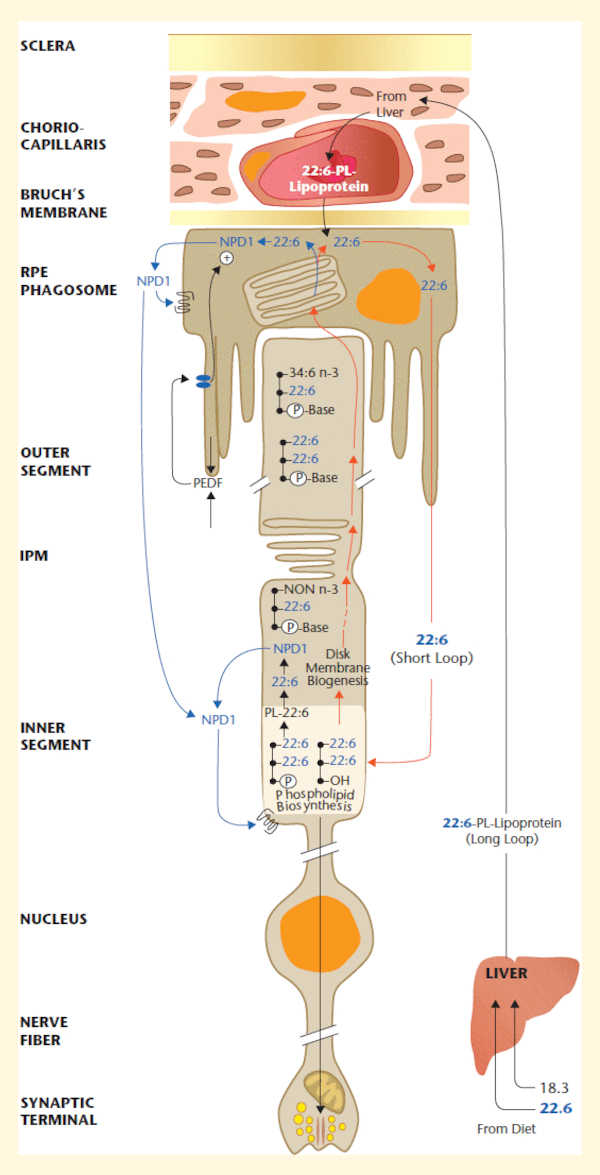Figure 2.

Download original image
Docosahexaenoic acid [DHA] (22:6) delivery to photoreceptors from the liver. Retention mechanisms and synthesis of neuroprotectin D1 [NPD1]. DHA (22:6) or linolenic acid from the diet are processed in the liver. Hepatocytes incorporate 22:6 into 22:6-phospholipid (22:6-PL)-lipoproteins, which are then transported by the blood stream to the choriocapillaris. 22:6 crosses Bruch’s membrane from the subretinal circulation and is taken up by the retinal pigment epithelial [RPE] cells lining the back of the retina to subsequently be sent to the underlying photoreceptors. This targeted delivery from the liver to the retina is referred to as the 22:6 long loop. Then 22:6 passes through the interphotoreceptor matrix [IPM] and into the photoreceptor inner segment, where it is incorporated into phospholipids for cell membrane, organelles, and disk membrane biogenesis. As new 22: 6-rich disks are synthesized at the base of the photoreceptor outer segment, older disks move apically toward the RPE cells. Photoreceptor tips are phagocytized by the RPE cells each day, removing the oldest disks. The resulting phagosomes are degraded within the RPE cells, and 22:6 is recycled back to photoreceptor inner segments for new disk membrane biogenesis. This local recycling is referred to as the 22:6 short loop. Upon inductive signaling, such as pigment-epithelium derived factor [PEDF], 22:6 is cleaved from a phospholipid pool for the synthesis of NPD1.
Les statistiques affichées correspondent au cumul d'une part des vues des résumés de l'article et d'autre part des vues et téléchargements de l'article plein-texte (PDF, Full-HTML, ePub... selon les formats disponibles) sur la platefome Vision4Press.
Les statistiques sont disponibles avec un délai de 48 à 96 heures et sont mises à jour quotidiennement en semaine.
Le chargement des statistiques peut être long.




